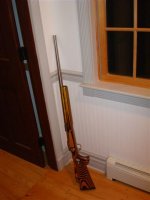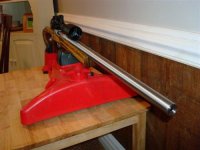Hello Butch,
The decision of choosing between one of the two indicators definitely requires the purchasers perusal. On J. Sharretts suggestion, I studied the Long Island Indicator Site. Following that, I called them.
I was thinking Mitutoyo might be the pick, especially with the difference in cost.
The fellow told me that for awhile, Mitutoyo had discontinued replacement parts for them. However, they were currently restarted on replacement parts. Bad sign, back to good sign, you might say.
The fellow went on to say, that because Mitutoyo used certain plastic parts, that have been known to cause problems, especially if handled roughly or banged, would fail. He also told me, that the Interapid was, by far, the better choice.
He is in the business, not me. They also do repair work.
I am looking for the longest indicator needed, for chambering field guns, perhaps F Class soon. Problem with Interapid is it is a 0.0005" indicator, and the 5.5" probe turns it into a 0.001" indicator. Long stylus not available on the 0.0001" indicator.
So, my general consensus is, for durability and servicability, the Interapid is the choice.
I know that you and others will have differing opinions, due to experience.
Perhaps you could ease my concerns over purchasing the Mitutoyo.
Thank you,
longshooter






